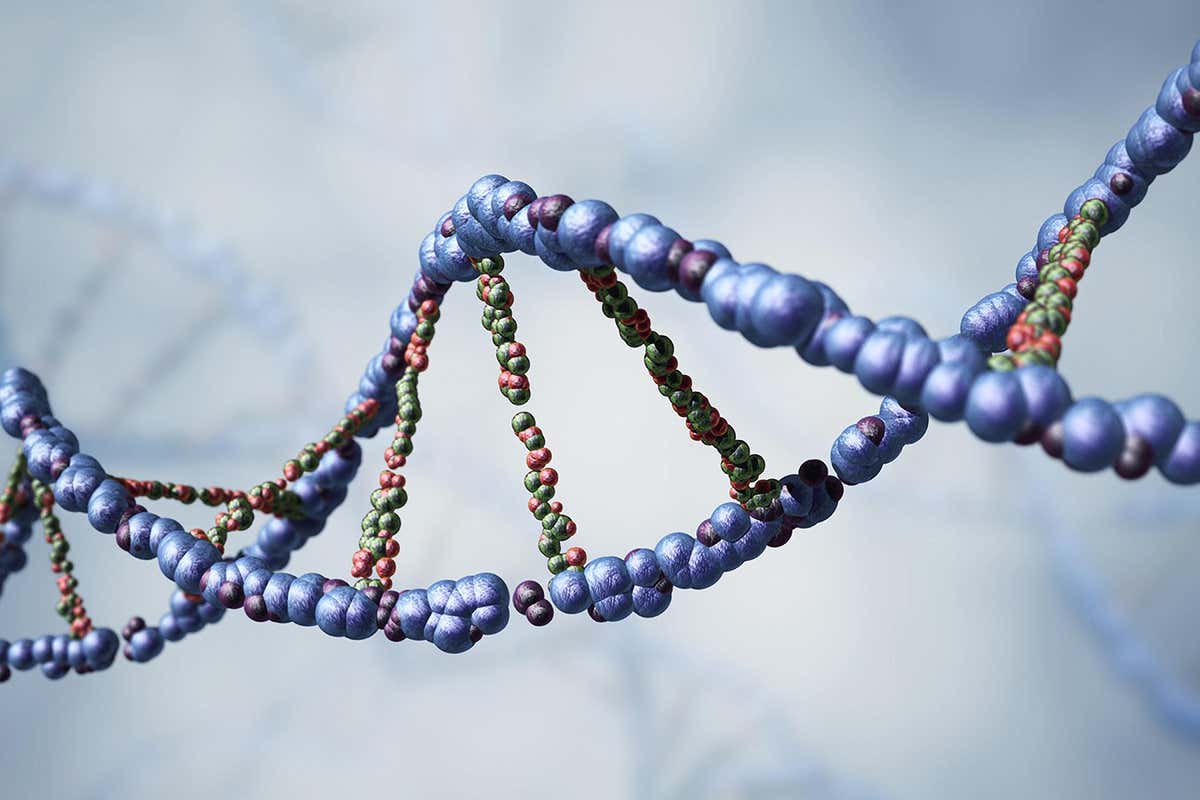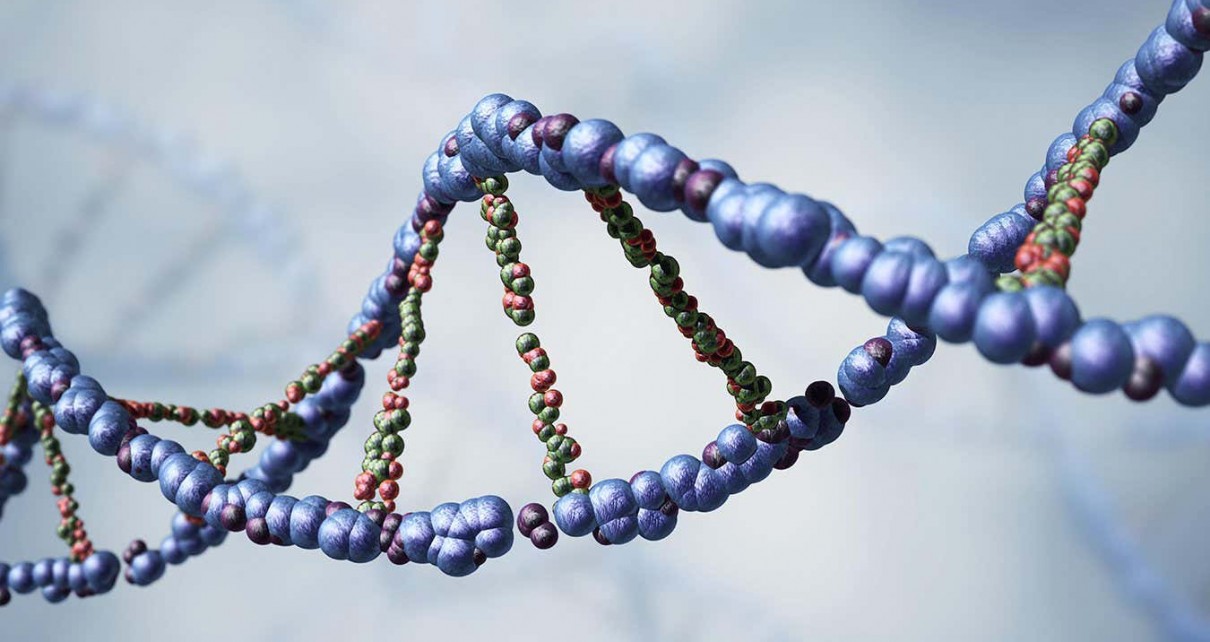[ad_1]

Segments of DNA can self-assemble into circuits that perform computations
Alexey Kotelnikov/Alamy
A liquid computer can use strands of DNA to run over 100 billion different simple programs. It could eventually be used for diagnosing diseases within living cells.
Fei Wang at Shanghai Jiao Tong University in China and his colleagues set out to make circuits similar to those on a computer chip, except with DNA molecules acting as wires and instructing the wires to configure in certain ways.
When you enter a command on a conventional computer, it instructs electrons to flow through a specific path on a silicon chip. These circuit configurations each correspond to different mathematical operations – adding functions to chips means adding such paths.
To replace the wiring with DNA, Wang and his team modelled how to combine short segments of DNA into larger structures that could serve as circuit components, like wires, or function to direct those wires to form different configurations.
They put this into practice by filling tubes with DNA strands and a buffer fluid and letting them attach to each other, combining into larger molecules through chemical reactions. The researchers also equipped all the molecules with fluorescence markers so they could keep track of what the circuit was doing based on how its parts were glowing.
They called the building blocks of their computer DNA-based programmable gate arrays (DPGA), and each DPGA could be designed to implement over 100 billion distinct circuits by adding different short molecules into its tube.
In one experiment, they connected three DPGAs, comprising about 500 DNA strands, to make a circuit that solves quadratic equations, and in another, they made a circuit for taking square roots. They input numbers by adding molecules of a specific shape that then participated in chemical reactions with molecules that made up the circuit, analogous to an electron moving through wires.
The outputs of each circuit were molecules produced by the last reaction. The researchers could read them out by measuring their fluorescent glow.
They used a similar methods to design a DPGA that could classify different small RNA molecules, picking out the ones that are known to be related to a type of renal cancer.
This last experiment is the beginning of what the team ultimately wants to do with DPGA technology. Because DNA molecules are inherently compatible with biological systems, they could offer a natural way to do “intelligent diagnostics of different kinds of diseases” through direct contact with body fluids or even from within cells, says Wang. He says that DPGA-based diagnostic devices would be highly efficient and able to run many operations at once.
Topics:
[ad_2]
Source link




